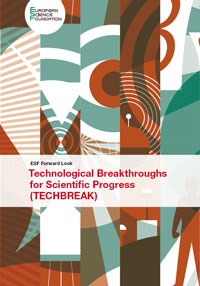| Jul 04, 2014 | |
Forecasting the development of breakthrough technologies to enable novel space missions |
|
| (Nanowerk News) A new report, "Technological Breakthroughs for Scientific Progress (TECHBREAK)", has been published today by the European Science Foundation. | |
 The European Science Foundation (ESF) was contacted at the end of 2009 to conduct a foresight activity for the European Space Agency (ESA), addressing the matter of technological breakthroughs for space originating in the non-space sector. A “Forward Look” project jointly funded by ESA and ESF and called ‘TECHBREAK’ was initiated as a result. Its goals were to forecast the development of such breakthrough technologies to enable novel space missions in the 2030-2050 timeframe and to identify related partnerships through synergies with non-space specialists. The result of this exercise is a report to ESA’s Director General and High-level Science Policy Advisory Committee (HISPAC). It was published today. The report was not prepared to serve as a definitive guide for very specific technologies to be developed for future space missions but rather to inform on, and flag up, the main developments in various technological and scientific areas outside space that may hold promise for use in the space domain. The report does this by identifying the current status of research for each domain, asserting the development horizon for each technology and providing entry points, in the form of key European experts and institutions with knowledge of the domain. The European Union’s concept of Key Enabling Technologies (KETs – see here: http://ec.europa.eu/enterprise/sectors/ict/key_technologies/index_en.htm) was chosen as a guide through this technological search. |
|
| The identification of problems and solutions specific to the space area led to focus the discussion around the concept of five “Overwhelming Drivers” for space research and exploration, i.e. long-term goals that can be transposed into technological development goals. The five Overwhelming Drivers identified in this exercise are (1) Reduce mass, maintain stiffness; (2) Build a spacecraft and missions that can last 50 years; (3) Deploy a 30m+ telescope into space; (4) Enable humans to stay in space for more than 2 years; (5) Autonomous geophysical survey of planets. These Overwhelming Drivers are a main focus of the TECHBREAK activity and report. There is the firm hope that they will be used throughout ESA’s Directorates as a novel categorisation of programme concepts and useful red thread to guide the reflexion about future missions and related technological maturation. |
| Source: European Science Foundation |
